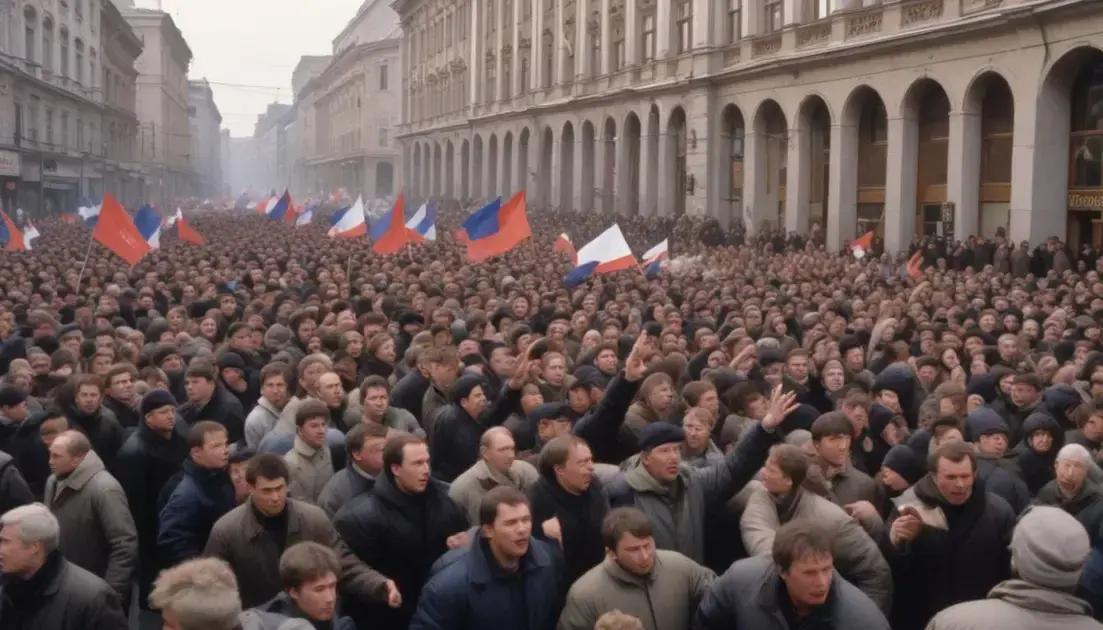
Russia’s 1998 Collapse: Default, Chaos and Reconstruction
The 1998 Russian financial crisis marked a significant economic downturn, characterized by national default, rampant inflation, and widespread business failures. Key events during this period included a drastic depreciation of the ruble and a severe loss of public trust in financial institutions. In the aftermath, reconstruction efforts led to important reforms, stabilizing the economy and slowly regaining investor confidence. These strategies laid the foundation for future growth and highlighted the importance of sound financial management in overcoming economic challenges.
The Russia 1998 Crisis marked a pivotal moment in the nation’s history, showcasing the fragility of economic systems amidst a transition. What caused this upheaval, and how did it reshape the landscape?
The lead-up to the crisis
In the years leading up to the Russia 1998 Crisis, the country faced many challenges. The transition from a state-controlled economy to a market-based one was not easy. Many people felt uncertain about their financial futures.
After the Soviet Union collapsed in 1991, Russia struggled to find its footing. The economy was in turmoil, and inflation rates soared. People watched as their savings lost value almost overnight. Small businesses popped up, hoping to thrive in a new market.
Yet, many industries were still recovering from years of stagnation. Government reforms aimed to boost growth, but they often fell short. Corruption and dishonest practices made matters worse. Investors grew wary, and confidence in the economy dwindled.
By the late 1990s, the situation had worsened. Russia was heavily dependent on oil exports. When oil prices dropped, the economy felt the impact hard. This created a domino effect, pushing businesses closer to the edge.
As these issues mounted, both local and foreign investors began to pull back. The result was a perfect storm that would soon lead to a national default, causing panic and chaos throughout the country.
Key events during the collapse
Several key events marked the collapse of Russia in 1998. These events sent shockwaves through the economy and affected millions of lives. One of the first signs of trouble was the sharp drop in the value of the ruble.
In August 1998, the Russian government announced a default on its domestic debt. This decision shocked investors and caused panic. The stock market plunged as people rushed to sell their assets.
The situation escalated when banks began to collapse. Many people lost their savings overnight. With the banking systems in turmoil, trust in financial institutions dwindled. Citizens felt the impact quickly, especially in their daily lives.
The prices of goods rose rapidly. Inflation soared, making it hard for families to buy food and other essentials. People struggled to make ends meet as their incomes could not keep up with rising costs.
International reactions followed. Many countries expressed concern over Russia’s instability. Investors pulled their money out, leading to even greater financial strain. This interconnectedness showed how globally reliant economies had become.
The chaos continued for months. Recovery seemed impossible for many, as the crisis laid bare the underlying weaknesses of the Russian economy.
Impacts on the Russian economy
The impacts on the Russian economy after the 1998 crisis were severe and far-reaching. Many businesses faced bankruptcy as financial markets crumbled. Small shops closed their doors, unable to cope with rising costs and falling sales.
Unemployment rates skyrocketed. As companies laid off workers, families struggled to make ends meet. This caused a significant drop in consumer spending. People prioritized essentials, leading to fewer sales overall.
Prices for basic goods surged. With inflation out of control, many Russians could hardly afford food. The costs of living increased, but wages did not keep pace, creating a deep financial strain.
Foreign investments dropped sharply. Investors lost confidence in the Russian market, which further hindered economic recovery. The once-promising economic reforms now appeared ineffective and risky.
The financial crisis also led to a shift in public trust. Many people questioned the government’s ability to manage the economy. This distrust created political challenges, as citizens demanded more effective leadership and solutions.
Finally, the Russian economy needed years to recover from the crisis. Despite efforts to stabilize the situation, the scars from 1998 highlighted the vulnerabilities in the system.
Reconstruction efforts post-1998
After the 1998 crisis in Russia, reconstruction efforts aimed to revive the economy. The government recognized the need for urgent reforms. They focused on stabilizing the financial system and restoring public trust.
One major step was to restructure government debt. This helped ease some pressure on the economy. The introduction of new policies aimed to attract foreign investments was crucial. Investors slowly began to return as confidence grew.
The Russian government also worked to improve regulations. Better oversight of banks and financial institutions was necessary. These changes aimed to prevent future crises and protect citizens’ savings.
Additionally, social support programs were introduced. These aimed to help those most affected by the crisis. Many families struggled, so assistance was vital for survival.
Gradually, the economy began to recover. By the early 2000s, Russia saw positive growth. Oil prices rebounded, bringing in much-needed revenue. This boom played a significant role in the country’s recovery.
Despite challenges, these early efforts laid the groundwork for a more resilient economy. The lessons learned from the crisis guided future policies, marking a new chapter for Russia.
Conclusion
In conclusion, the 1998 Russian financial crisis was a turning point for the country’s economy. The chaos and challenges highlighted serious weaknesses. However, the reconstruction efforts that followed laid the groundwork for recovery.
By implementing reforms, stabilizing the financial system, and attracting investments, Russia began to bounce back. These changes helped rebuild trust among citizens and investors alike. Moreover, social support programs played a crucial role in helping those affected by the crisis.
Ultimately, the lessons learned from the crisis shaped future economic policies. They pushed for a more resilient economy. As we reflect on this period, it reminds us of the importance of sound financial management and effective governance in achieving long-term stability.


